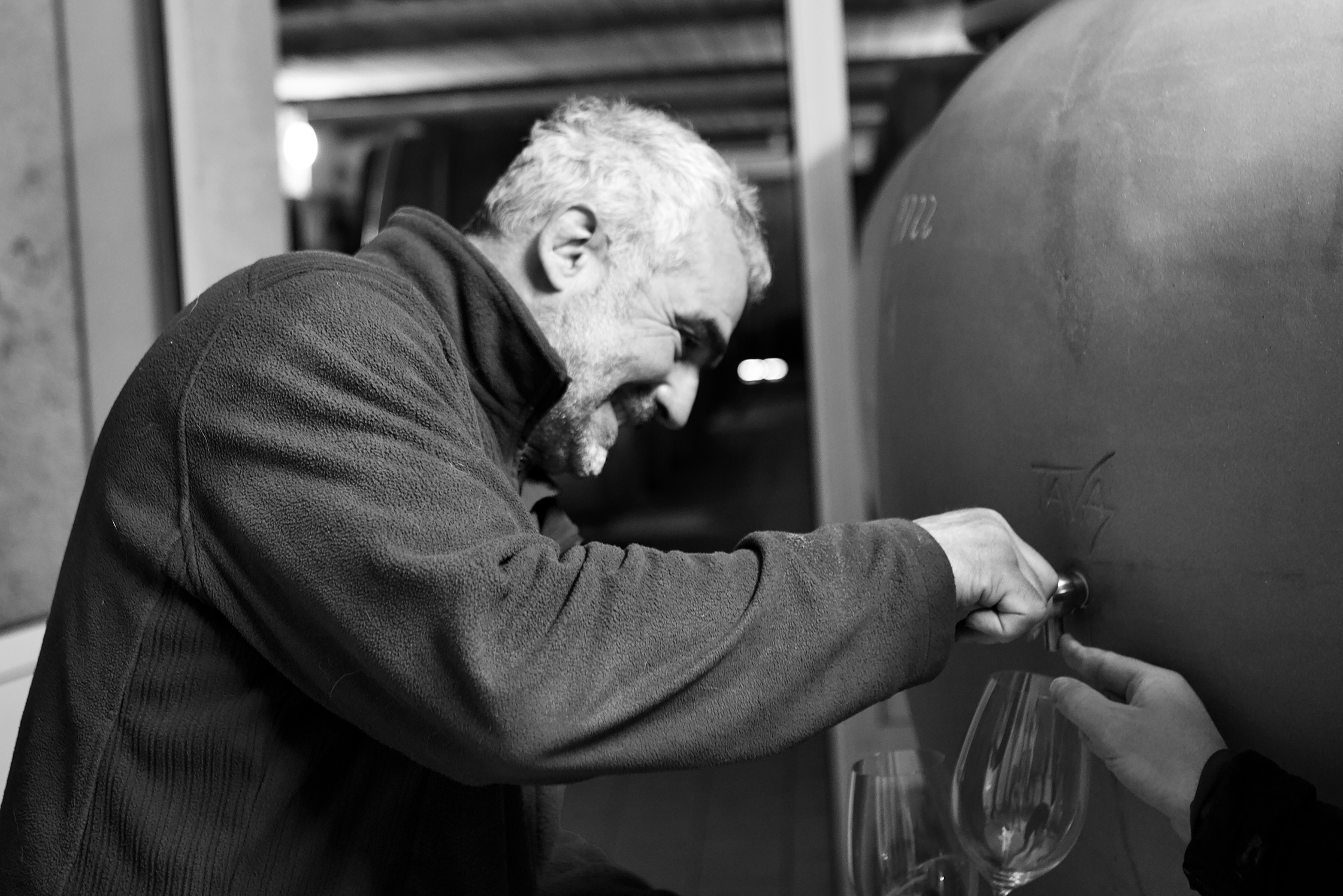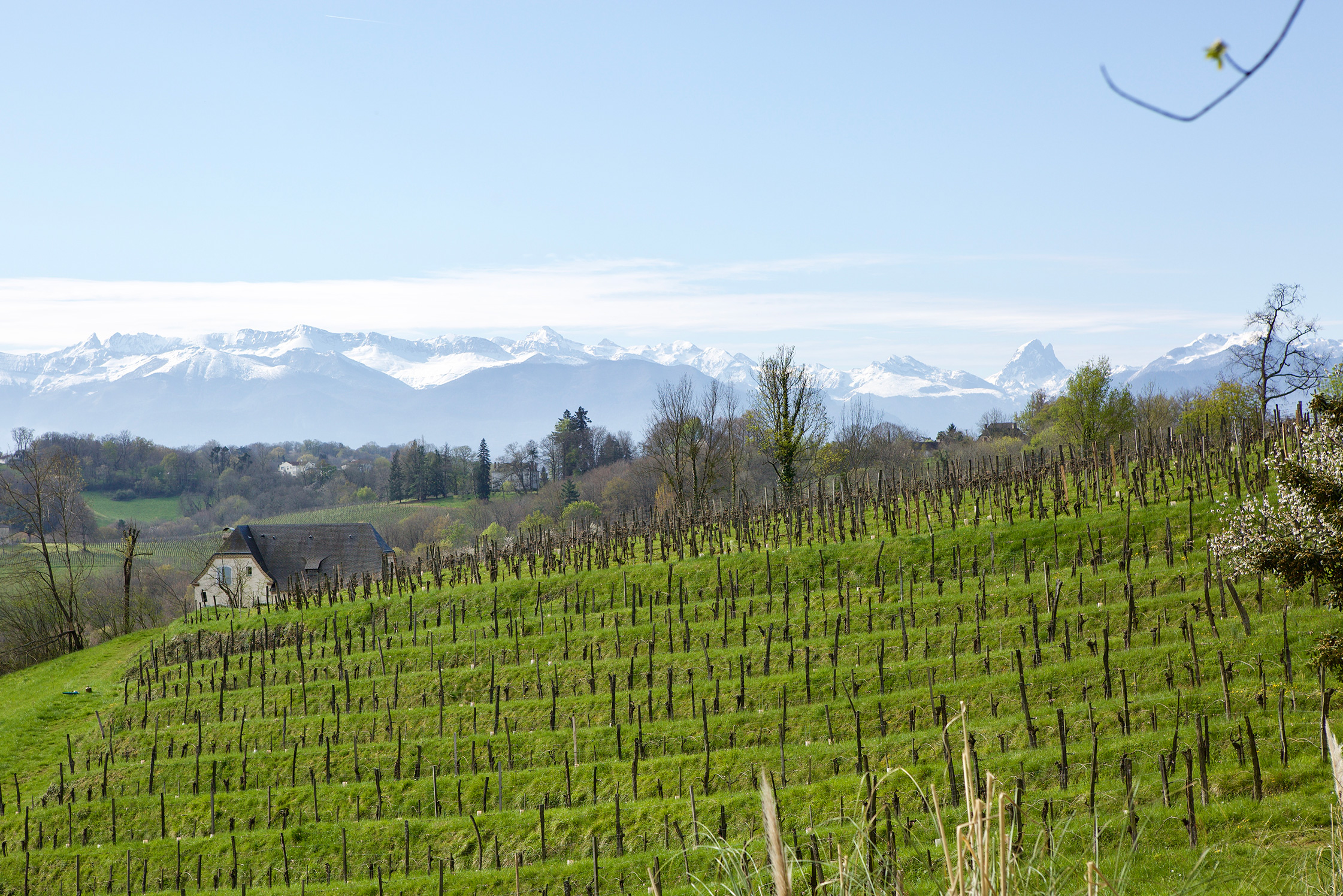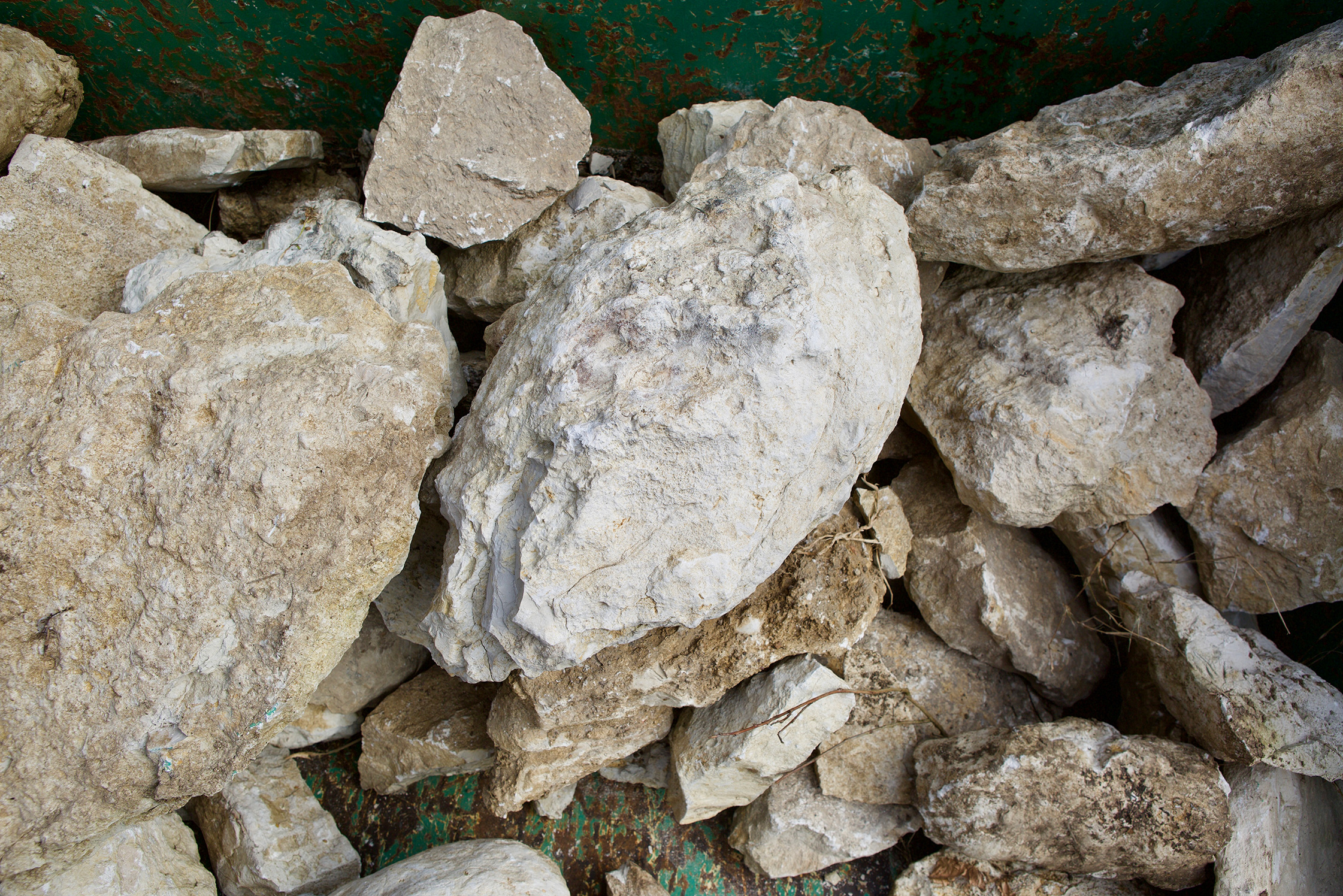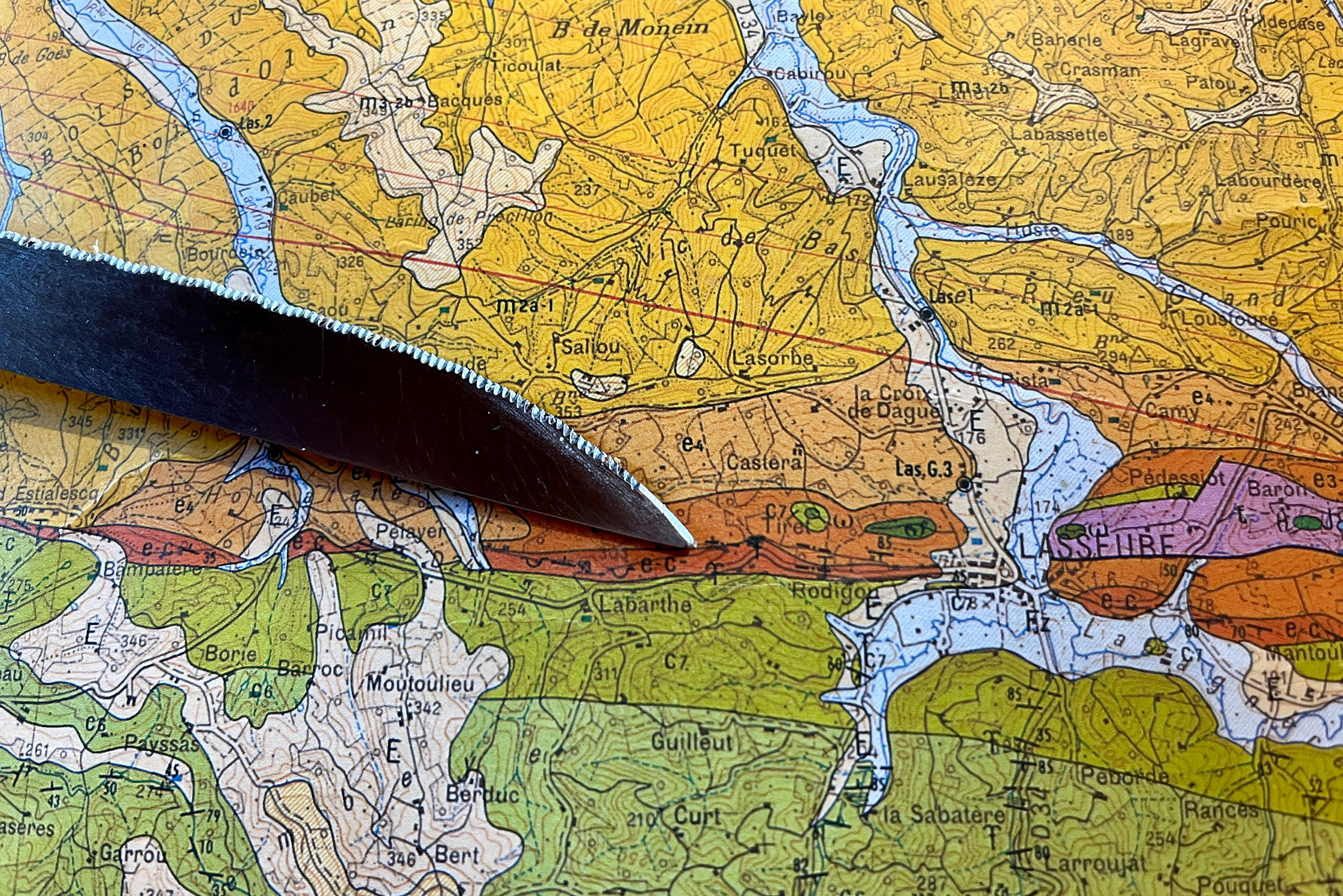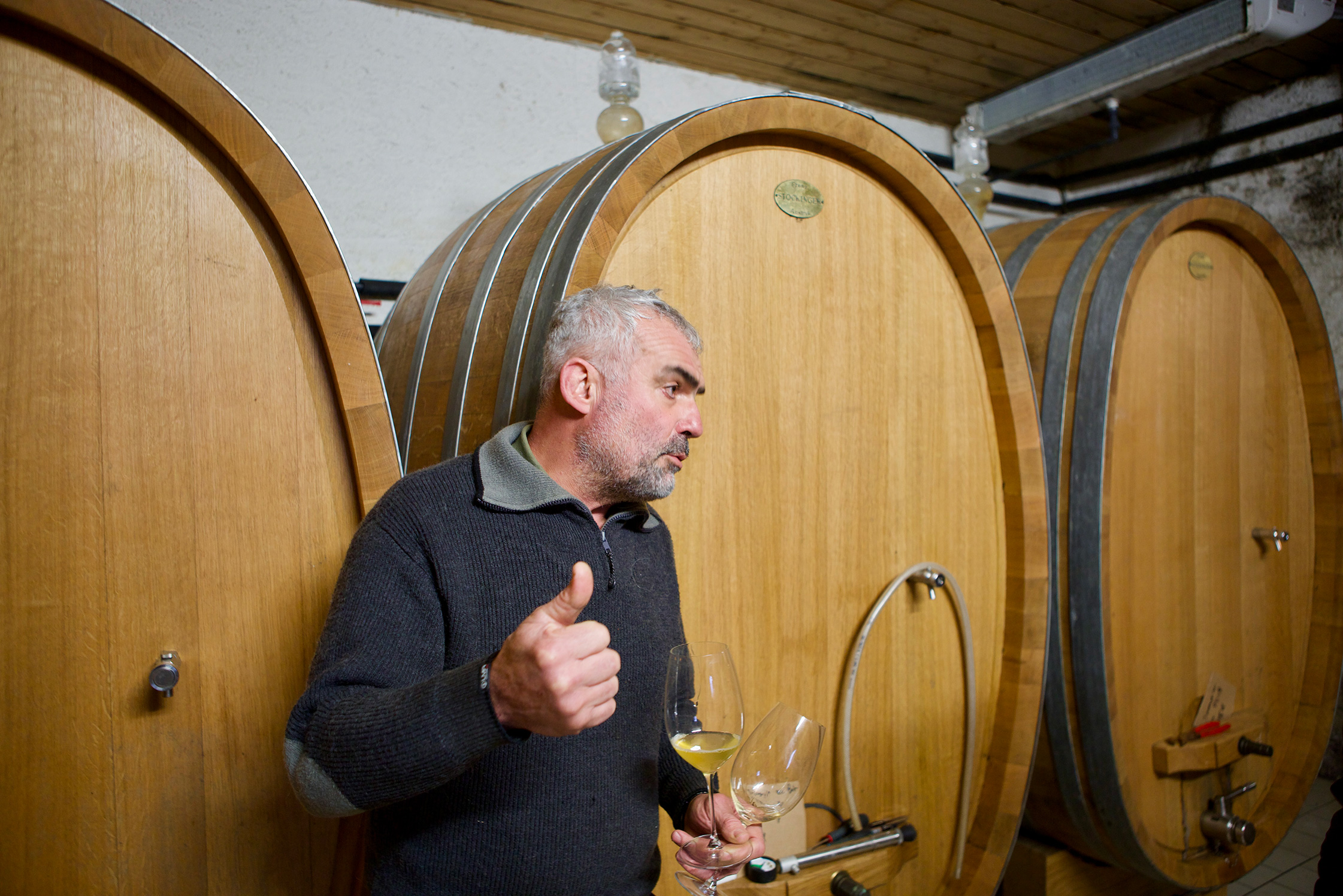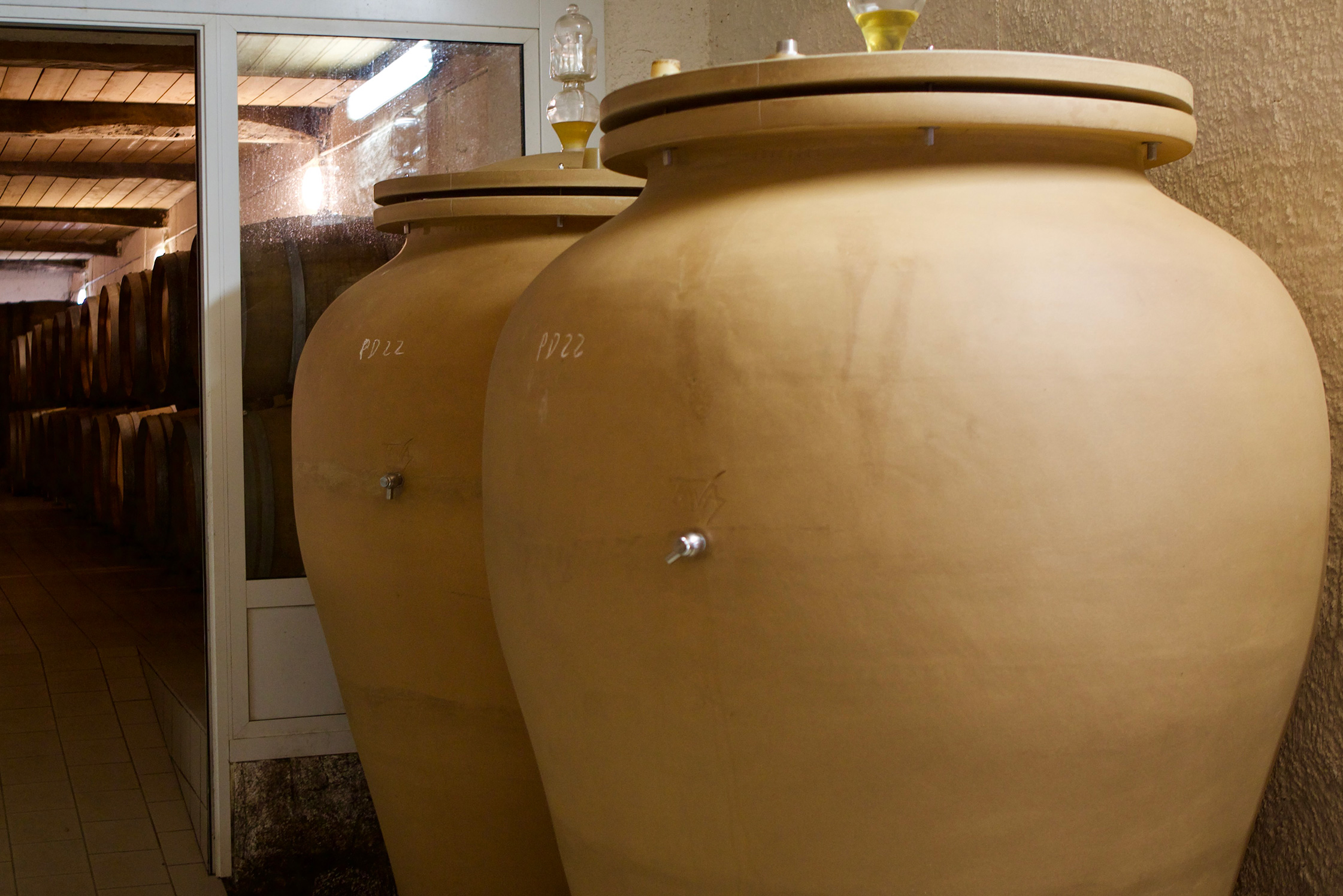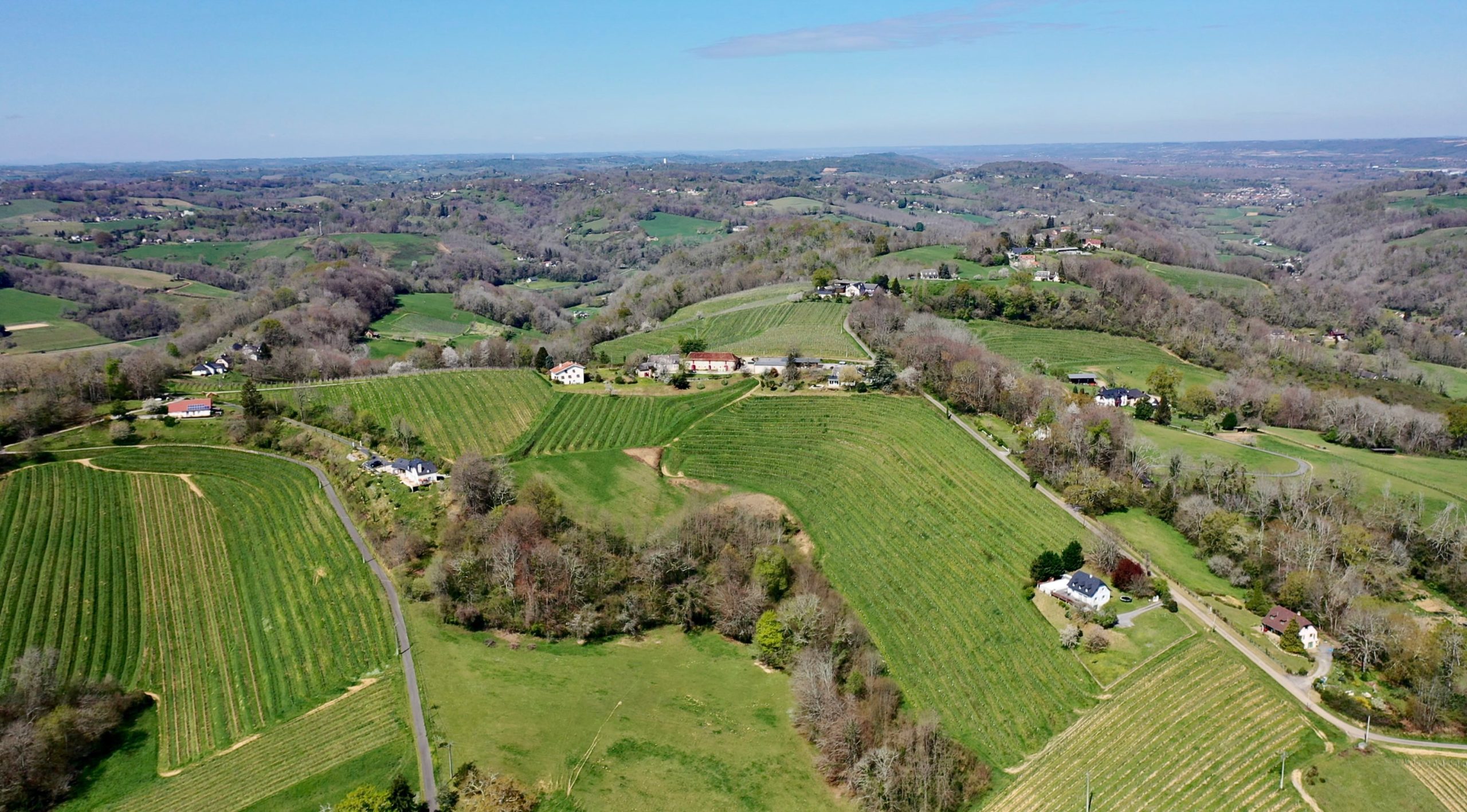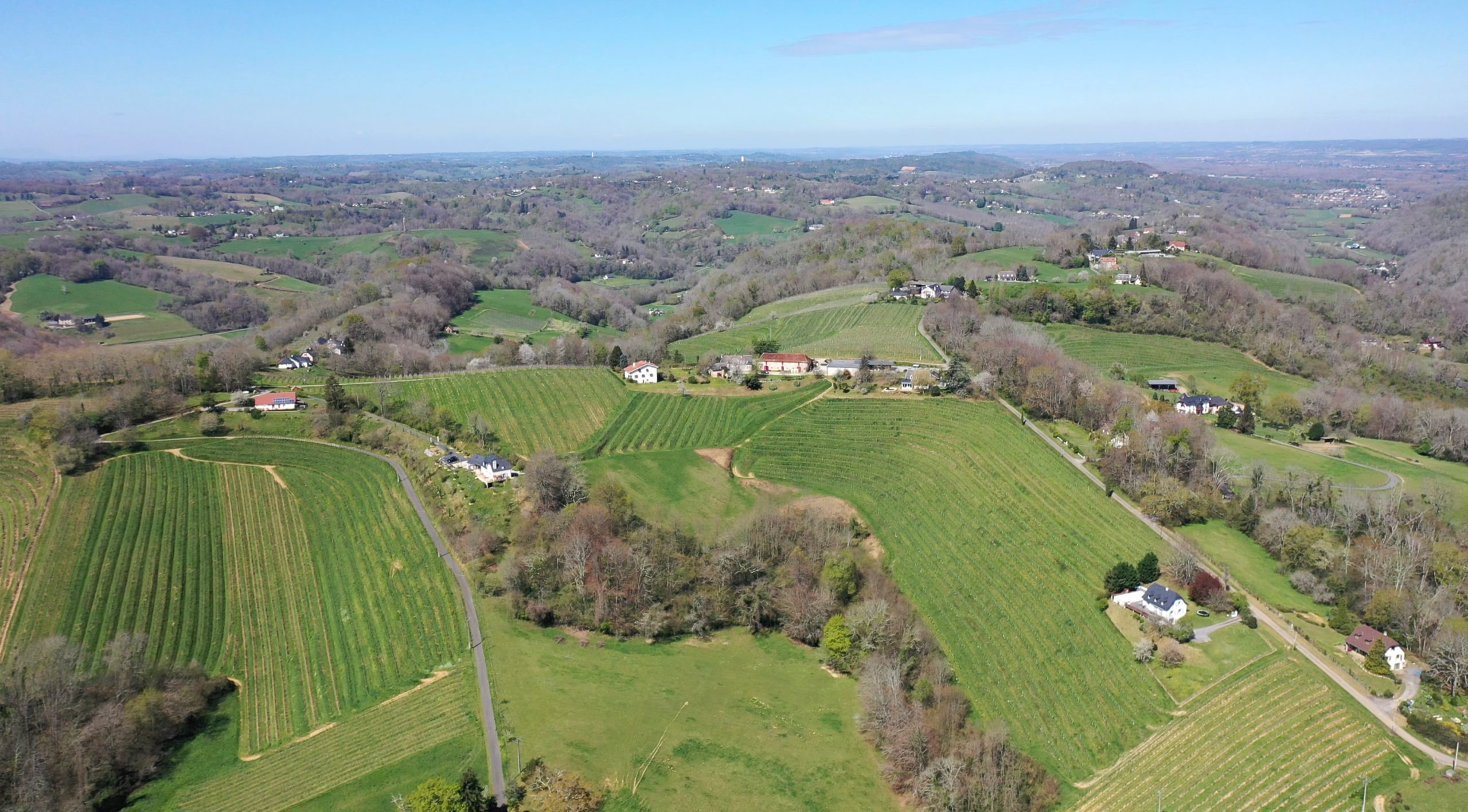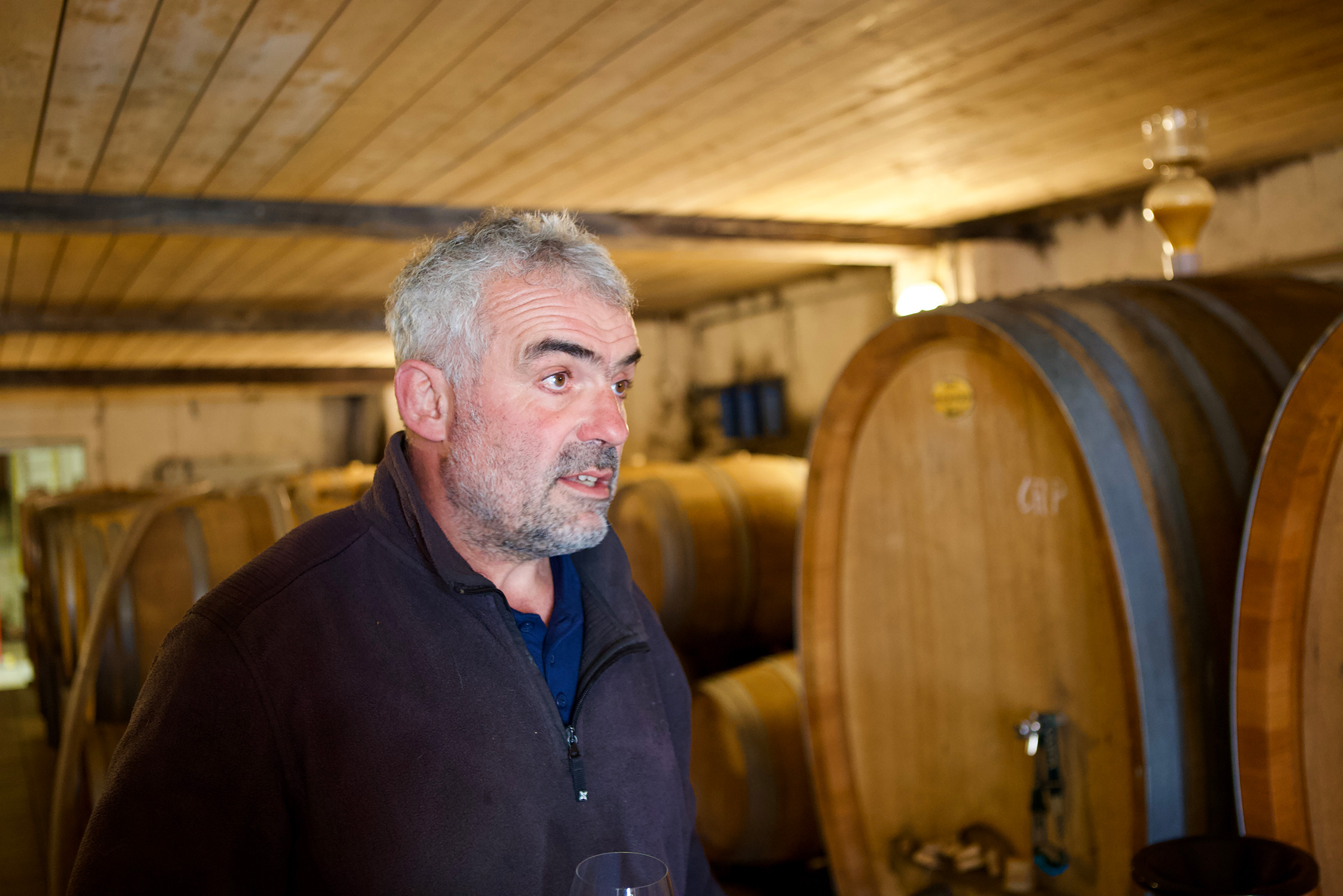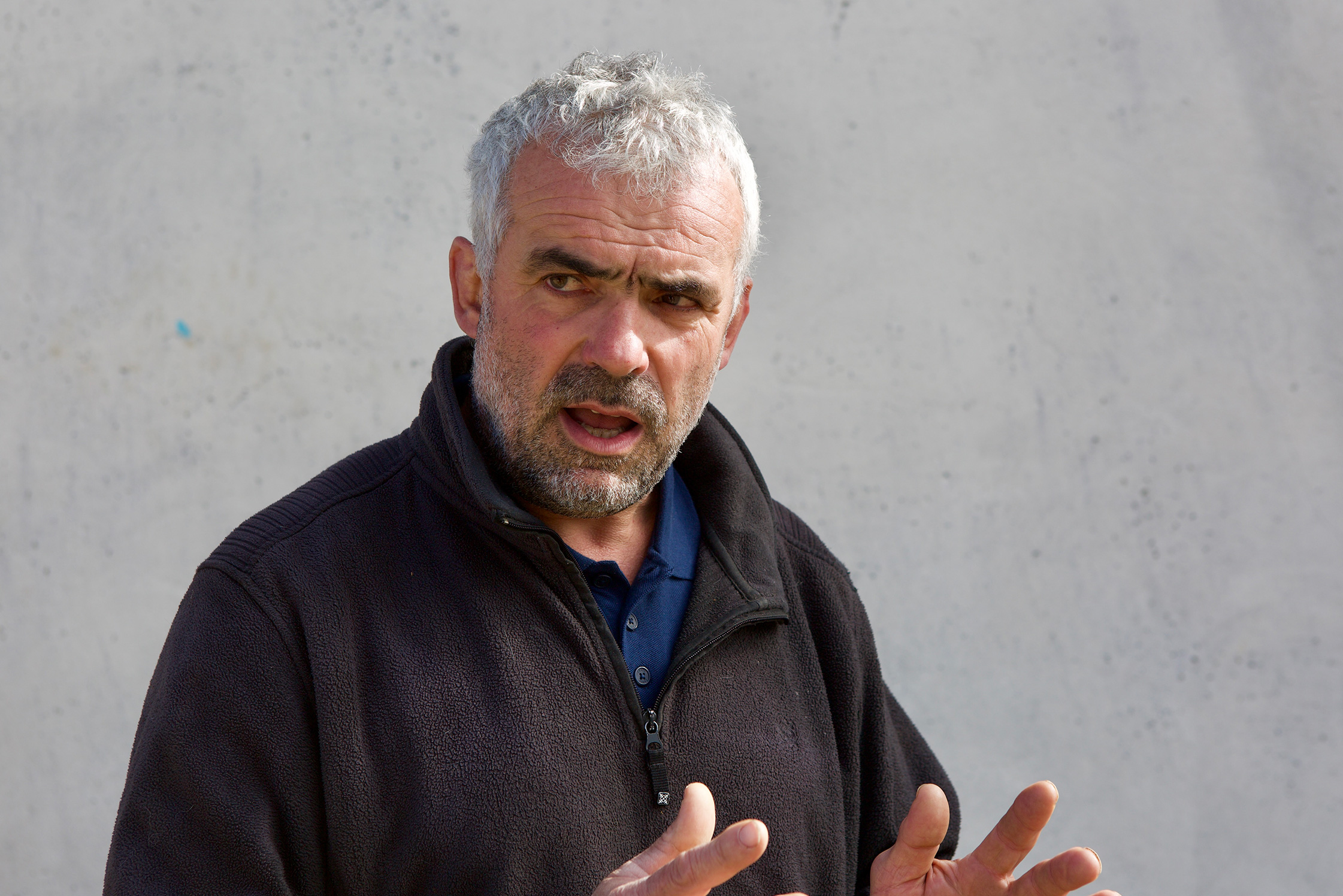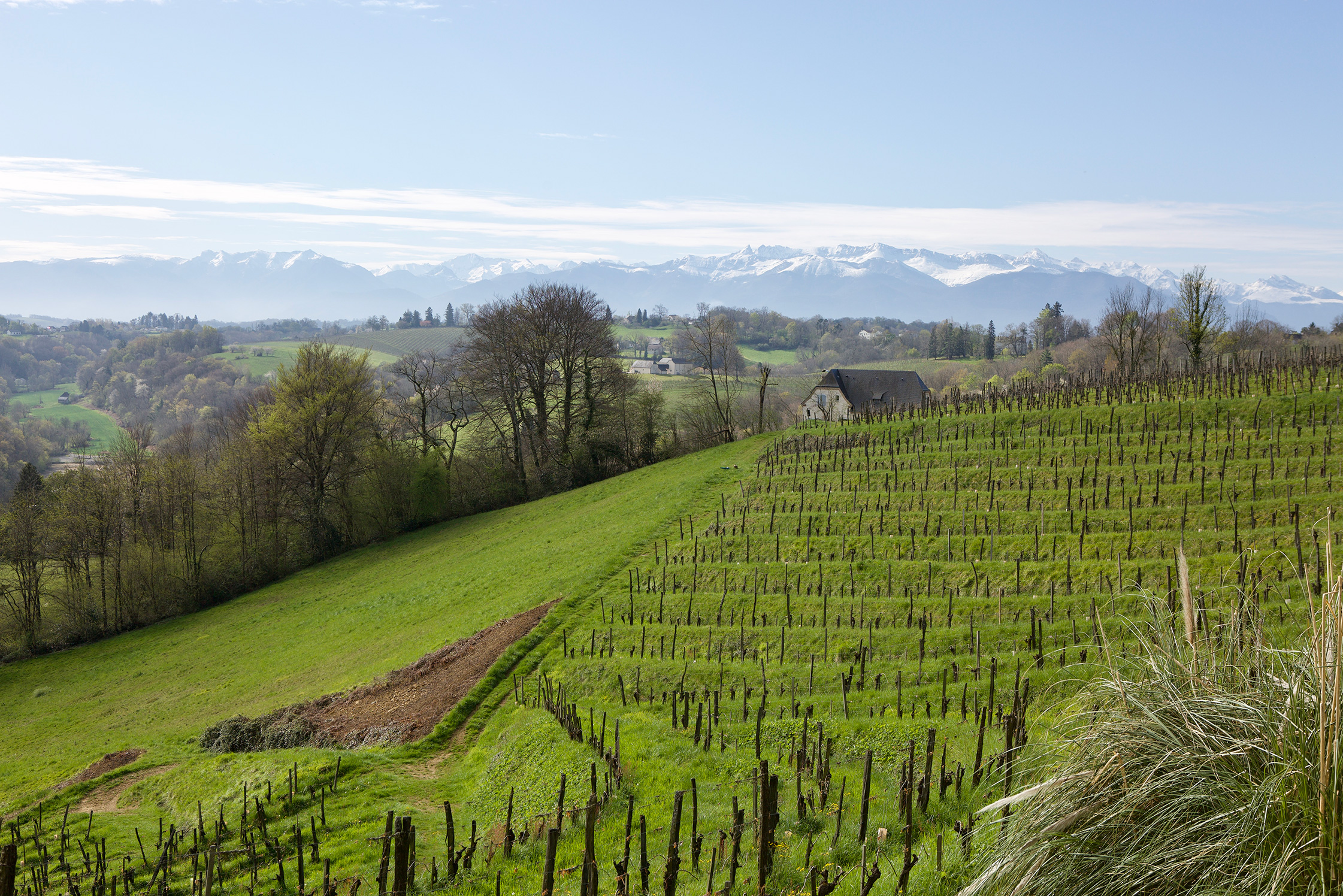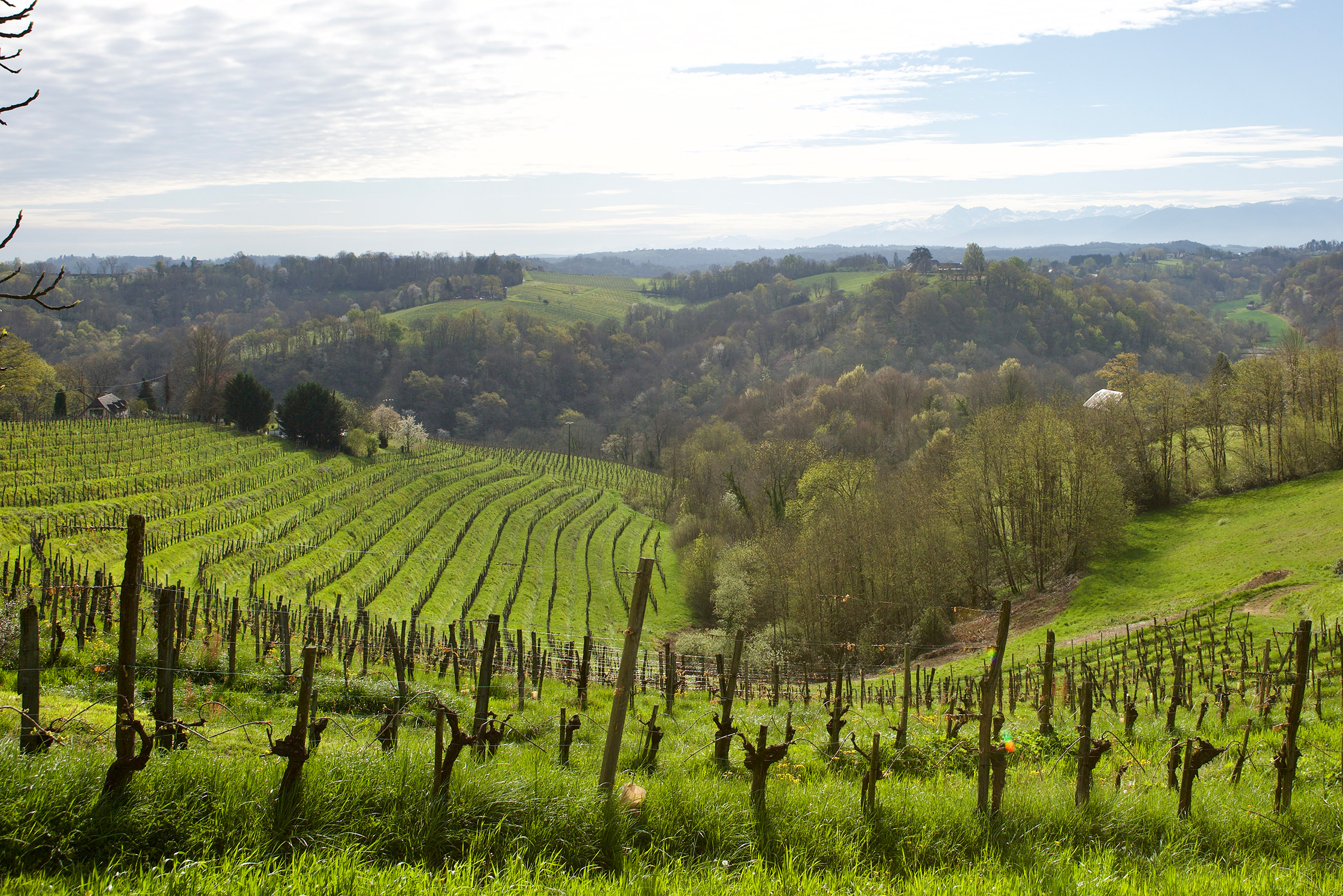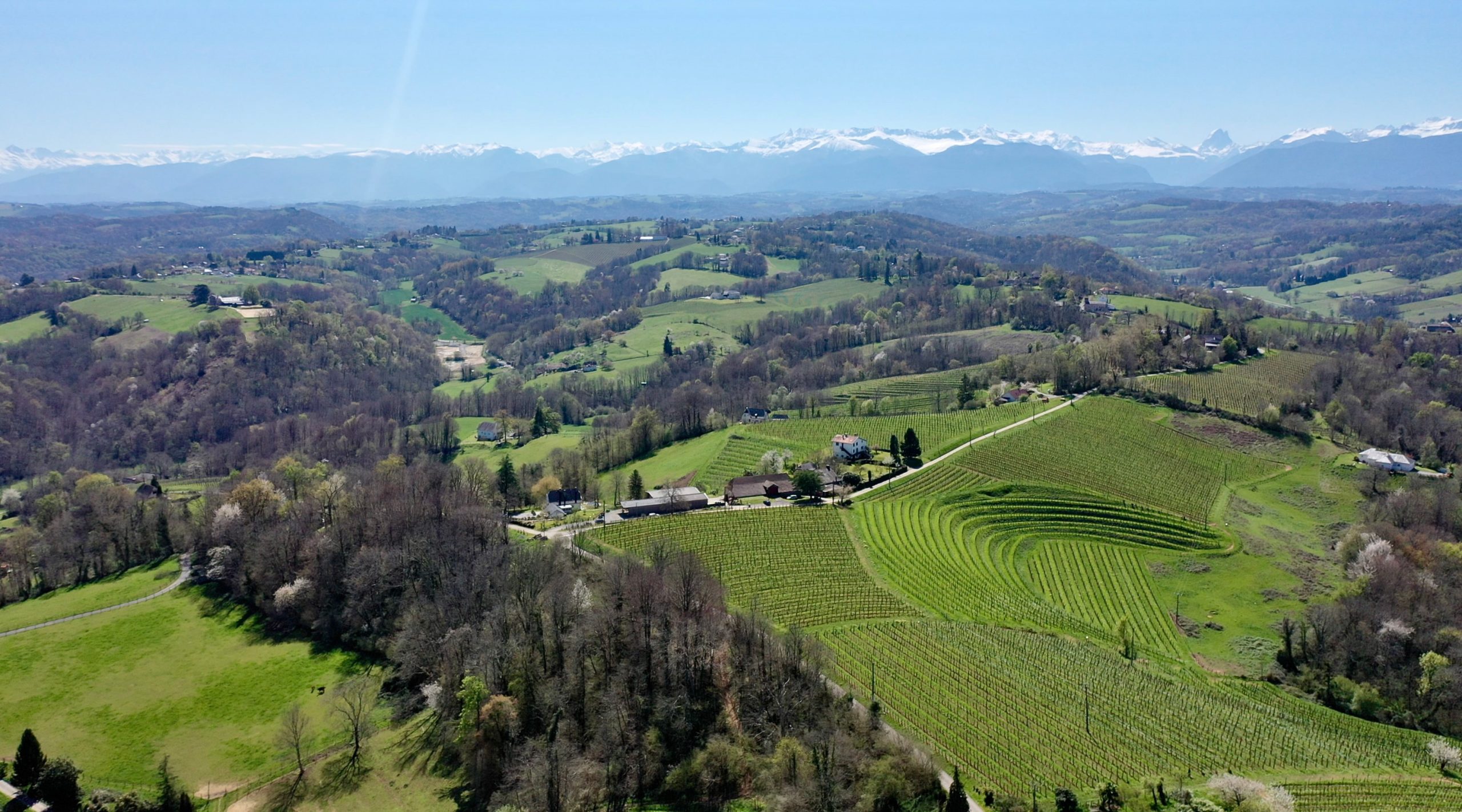Camin Larredya
Short Summary
Full Length Story
Former professional rugby player and La Revue du vin de France’s “2023 Vigneron de l’Année,” Jean-Marc Grussaute has elevated Jurançon’s historic Camin Larredya to international fame. With the unexpected early passing of his father, a very young Jean-Marc returned home from his life in sports and quickly converted his family’s 9.5 hectares to organic farming. The vines are grown on the higher altitude eastern side of the appellation on a series of verdant, amphitheater-shaped, south-oriented terraces on limestone and limestone conglomerate bedrock (known as Poudingue de Jurançon) covered in shallow, rocky clay topsoil. The influence of both Atlantic and Pyrenean winds is felt in his blends of sweet and dry Gros Manseng, Petit Manseng, and Petit Courbu. In the cellar, Jean-Marc combines tradition and innovation using old barriques, large Stockinger foudres, Tava amphoras, and amphora eggs.
The Jurançon Sec “Part Davant” comes from a 4 ha southeast-facing plot at 250-300m planted to 50% Gros Manseng, 30% Petit Manseng, 20% Petit Courbu in 1950/2010 on a steep hill of “Poudingue de Jurançon” bedrock with a shallow clay topsoil. It’s natural fermentation lasts for about 60 days in oak foudre at 20°C max. Aged on lees for 8 months in 25-hl foudre (66%), amphora (34%). Full malolactic fermentation. Light filtration and with 50mg/L total sulfur. Residual sugar: 2g/L (dry).
The Jurançon Sec “Costa Blanca” comes from a 1-ha south-facing Petit Manseng plot planted in 2014/2017 on a steep hill of limestone bedrock with a shallow clay and rocky topsoil. It’s natural fermentation lasts for about for 60 days in oak foudre at 20°C max. Aged on lees for 15 months in a 12-hl sandstone egg. Partial malolactic fermentation. Sterile filtration (due to remaining malic acid) and with 50mg/L total sulfur. Residual sugar: 2g/L (dry).
The sweet version of Jurançon “Costa Blanca” comes from a 0.7 ha south-facing plot planted in 2015 to 70% Petit Manseng, 15% Camaralet, and 15%Lauzet on a steep hill of limestone bedrock with a shallow clay and rocky topsoil. It’s naturally fermented for 90 days in oak barrels at 18°C max. Aged on lees for 15 months in 225-hl French oak. No malolactic fermentation. Filtered and with 80mg/L total sulfur. Residual sugar 86g/L.
The Jurançon “Au Capceu” faces south and east at 280-300m planted in 1970 to 1995 Petit Manseng in on a steep terraced hill of “Poudingue de Jurançon” bedrock with a shallow clay topsoil. It’s naturally fermented for 90 days in oak foudre at 20°C max. Aged on lees for 12 months in 12-hl foudre (50%) and 225-l French oak (50%). No malolactic fermentation. Light filtration and with 80mg/L total sulfur. Residual sugar of 110 g/L.


